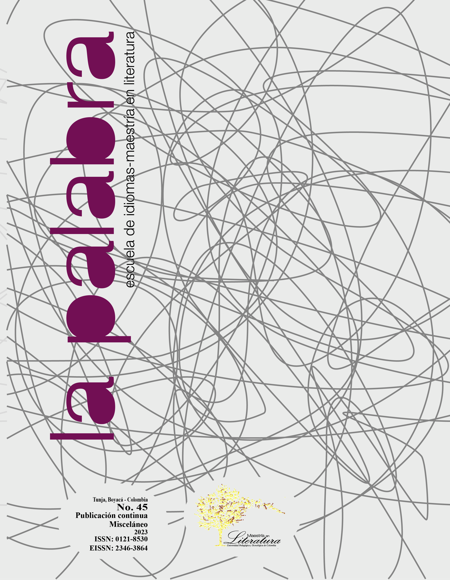Cubanness, Exile and Artist in Héctor Santiago’s La memoria del agua

Abstract
The article investigates the Cubanness linked to the figure of the exiled and the artist as a condition of life that establishes geographical and border consciousness. We interpret La memoria del agua by Héctor Santiago based on the crosscultural modality of Ortiz (Contrapunteo) the epistemological location of Mignolo (La idea) and the border consciousness of Anzaldúa to demonstrate how the Cubanness of the exiled endeavors to configure the geographical consciousness and logic of the border. The character from Santiago, therefore, exists both as an exiled and an artist since he lives the triple existential condition of the cage, flight and return. This represents in La memoria del agua the place and moment of Cubanness. We discover that Cubanness is based on the conscious attitude of the exiled, whose purpose is to establish the existence of a geographical consciousness that includes also the consciousness of the border.
Keywords
cubaness, exiled, artist, geopraphical consciousness, body
Author Biography
Charles Didier Noa Bela
Charles Didier Noa Bela, PhD in Comparative Spanish-American Literature from the University of Yaounde 1 (2021), Cameroon. He is currently Professor of Language and Literature in the Spanish Section of the Department of Modern Languages at the University of Ghana. His research focuses mainly on literary issues and the relationship between literature and other disciplines such as philosophy, anthropology, history and translation studies.
References
- Anzaldúa, Gloria. Boderlands/La frontera: The New Mestiza. Traducción de Carmen Valle. Capitán Swing Libros, 2016. Impreso. DOI: https://doi.org/10.1515/9780773551886-027
- Bhabha, Homi. El lugar de la cultura. Traducción de César Aira. Edición Manantial, 2002. Impreso.
- Besserer, Federico. “Estudios transnacionales y ciudadanía transnacional”. Mummert, Gail (Ed.), Fronteras fragmentadas. Colegio de Michoacán, 1999, pp. 215-238. Impreso.
- Bueno, Gustavo. El mito de la cultura. Pentalfa Ediciones, 2016. Impreso.
- Butler, Judith. El género en disputa. El feminismo y la subversión de la identidad. Ediciones Paidós Ibérica, 2007. Impreso.
- Dussel, Enrique. El encubrimiento del otro: hacia el origen del mito de la modernidad. Plural Editores, 1994. Impreso.
- Martí, José. Nuestra América. Edición crítica de Cintio Vitier, Universidad de Guadalajara, Centro de Estudios Martianos, 2002. Impreso.
- Marrero, Fernández. La raíz de la creación. Ensayos sobre la cubanidad del siglo XX. Universidad Central “Marta Abreu” de Las Villas, Editorial Feijóo, 2018. Impreso.
- --- Critique de la raison nègre. La Découverte, 2013. Impreso.
- ---. “La idea de América Latina (la derecha, la izquierda y la opción decolonial)”.. Crítica y Emancipación, Año I, núm. 2, 2009, pp. 251-276. Impreso.
- Ortiz, Fernando. Contrapunteo cubano del tabaco y el azúcar. Universidad Central de Las Villas, Direcciones de Publicaciones, 1963. Impreso.
- ---. “Los factores humanos de la cubanidad”. En Vitier, Medardo. Del ensayo americano. Vol. XIV, 1945, pp. 161-186. Impreso.
- Santiago, Héctor. La memoria del agua. Aduana Vieja Editorial, 2012. Impreso.
- Spivak, Gayatri. “Can the Subaltern speak?”In Nelson, Cary and Gossberg, Lawrence. Eds.
- Marxism and the Interpretation of Culture, 1988, pp. 271-313. Impreso.